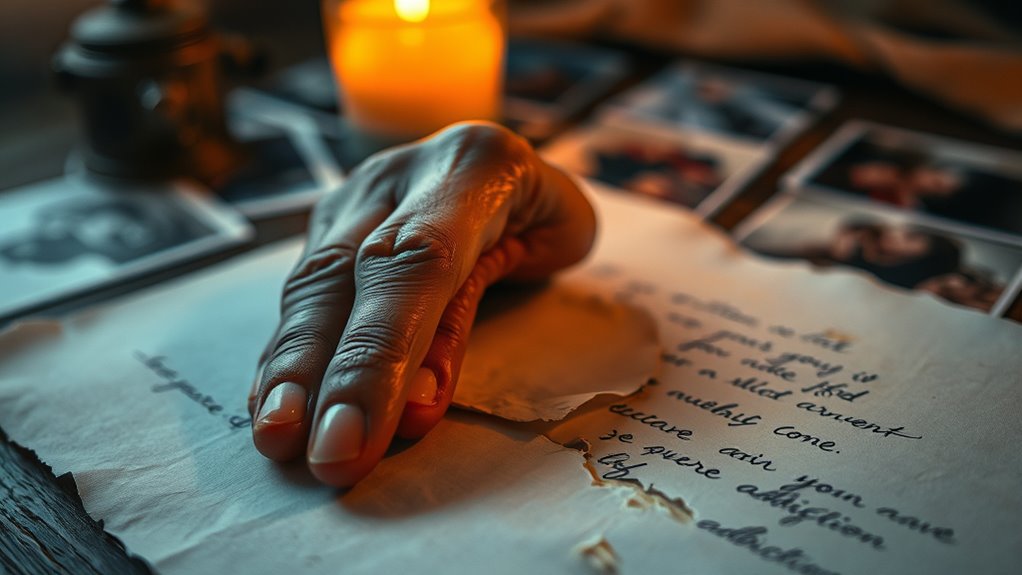Expect a challenging withdrawal timeline as you recover from love addiction. In the first week or two, you’ll likely face intense cravings, emotional highs and lows, and sleep issues. By weeks three to four, these feelings diminish, and emotional stability begins to return. After two months, you’ll notice more clarity and self-awareness, though setbacks may happen. Staying patient and practicing self-care help you move forward. If you continue exploring, you’ll gain deeper insights into managing this healing process.
Key Takeaways
- Emotional intensity peaks in the first one to two weeks, with cravings, intrusive thoughts, and sleep disruptions common.
- Weeks three to four show decreased emotional volatility and diminishing cravings as the brain begins rewiring.
- After the first month, emotional symptoms lessen, and self-awareness increases, aiding in rebuilding life and establishing boundaries.
- Encounters with triggers may cause setbacks, but recovery is ongoing with healthy coping strategies.
- Progress is nonlinear; patience, support, and self-care are essential for sustained healing beyond three months.

Are you wondering what to expect during love addiction withdrawal? If you’re breaking free from a pattern of obsessive attachment, understanding the timeline can help you navigate this challenging process. Withdrawal isn’t a straight line; it’s a journey with ups and downs, and knowing what’s typical can provide some reassurance. In the early days, you’ll likely experience intense emotional turmoil. Cravings for the person, feelings of emptiness, and a sense of loss are common. Your brain is adjusting to the sudden absence of the emotional highs you once associate with the relationship. You might feel anxious, irritable, or even hopeless as your body and mind start to recalibrate. These symptoms can seem overwhelming, but they’re part of the healing process.
Expect intense emotional upheaval as your brain adjusts to the absence of relationship highs during love addiction withdrawal.
During the first one to two weeks, emotional spikes are at their peak. You may find yourself obsessively thinking about the person, replaying memories, or longing for contact. Sleep can be disrupted, and you might experience physical symptoms like headaches, fatigue, or stomach upset. It’s essential to practice patience and self-compassion during this period. As your body begins to adapt, these intense feelings will gradually lessen, but it can take time. Around the third or fourth week, many people notice a shift. The craving diminishes, and the emotional rollercoaster becomes less volatile. You may still feel sad or lonely, but those feelings are less overwhelming. This is an important milestone—it signals that your brain is starting to rewire itself away from dependence on the relationship for emotional stability.
From the second month onward, the withdrawal process often becomes more manageable. You might experience moments of clarity and increased self-awareness. Your focus may shift from obsessing over the past to rebuilding your life and rediscovering yourself. During this phase, you could encounter triggers—places, songs, or memories—that stir up old feelings. Recognizing these triggers and learning healthy ways to respond can help you stay on track. By the three-month mark, many individuals report significant improvements. The intense craving has mostly subsided, and you’re better equipped to establish boundaries and foster healthier relationships in the future. However, emotional healing is rarely linear; setbacks can happen, but they’re part of growth. Additionally, understanding how AI-driven security systems offer advanced threat detection can be a metaphor for recognizing and addressing emotional vulnerabilities during recovery.
Understanding this timeline can empower you to stay committed to your recovery. It’s a gradual process that requires patience, self-care, and support. Remember, every person’s experience is unique, but knowing what generally occurs during each phase can help you endure the tough days and celebrate the progress along the way.
Frequently Asked Questions
How Long Does Love Addiction Withdrawal Typically Last?
Love addiction withdrawal usually lasts from a few weeks to several months, depending on how severe your attachment was. You might experience intense cravings, emotional ups and downs, and feelings of loneliness initially. As you progress, these symptoms tend to lessen, but healing varies for everyone. Stay patient, seek support, and focus on self-care. With consistent effort, you’ll gradually regain emotional balance and move forward healthier.
Are There Any Long-Term Effects After Withdrawal?
Yes, there can be long-term effects after withdrawal. You might still experience lingering emotional sensitivity, trust issues, or difficulty forming new attachments. These effects often improve with time, therapy, and self-care. You should stay patient and committed to healing, as rebuilding emotional resilience takes time. Remember, ongoing support and personal growth can help you recover fully and develop healthier relationship patterns in the future.
Can Medication Help During Withdrawal?
While medication isn’t a magic wand, it can gently support your journey through withdrawal. You might find that certain antidepressants or anti-anxiety meds ease symptoms like mood swings or intense cravings. Always consult a healthcare professional before starting any medication, as they’ll tailor the approach to your needs. Remember, medication works best alongside therapy and self-care, helping you regain balance and feel more in control during this challenging time.
How Can Partners Support Someone Through Withdrawal?
You can support someone through withdrawal by being patient and understanding. Listen without judgment, offer reassurance, and encourage healthy coping strategies. Help them stay committed to their recovery plan, and avoid pressuring them. Be present, provide comfort, and remind them that setbacks are normal. Your steady support and empathy can make a significant difference in helping them navigate this challenging period smoothly and confidently.
What Are Signs of Recovery During Withdrawal?
Signs of recovery during withdrawal are clearer than a summer sky. You’ll notice emotional stability returning, cravings diminishing, and you feeling more in control. Your thoughts become less obsessive, and you start prioritizing self-care. Sleep improves, and you find joy in everyday activities again. Over time, the intense dependence fades, replaced by healthier boundaries. Trust the process—each small victory marks a giant leap toward lasting healing and independence.
Conclusion
So, as you navigate the love addiction withdrawal timeline, remember that the hardest part often comes right before the breakthrough. You might think you’re finally free, only to realize healing isn’t a straight line. Ironically, it’s in these moments of setbacks that true progress happens. So, keep going—because sometimes, losing the obsession is the only way to truly find yourself. And in the end, that’s the real victory worth waiting for.









